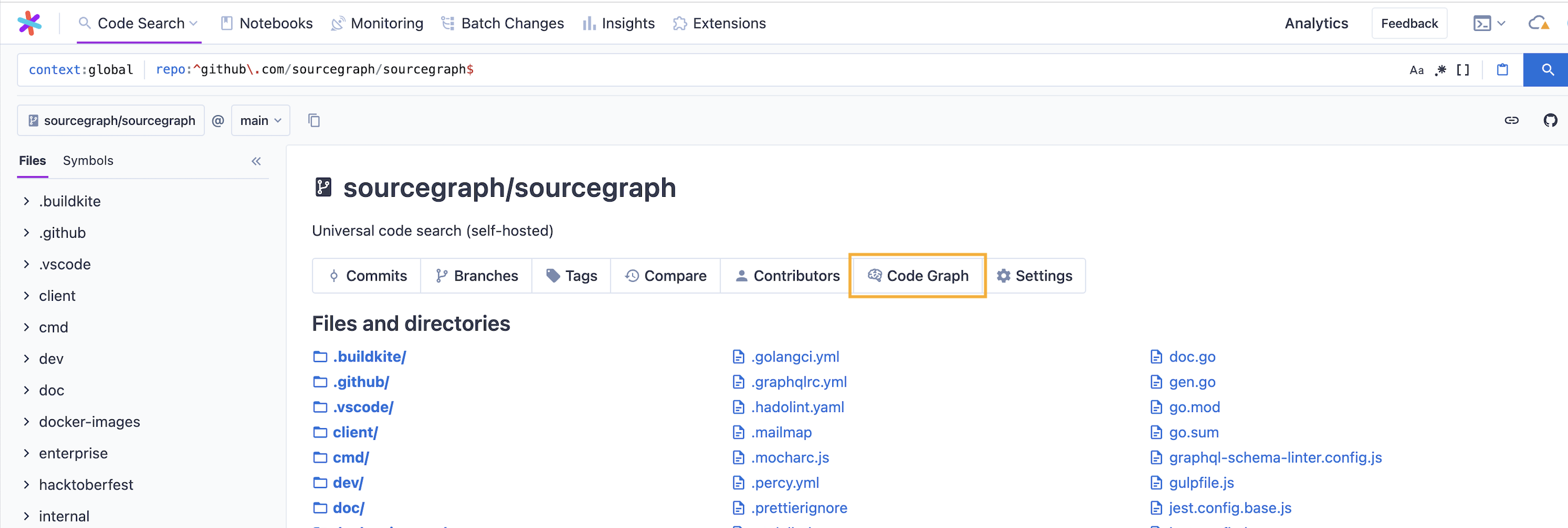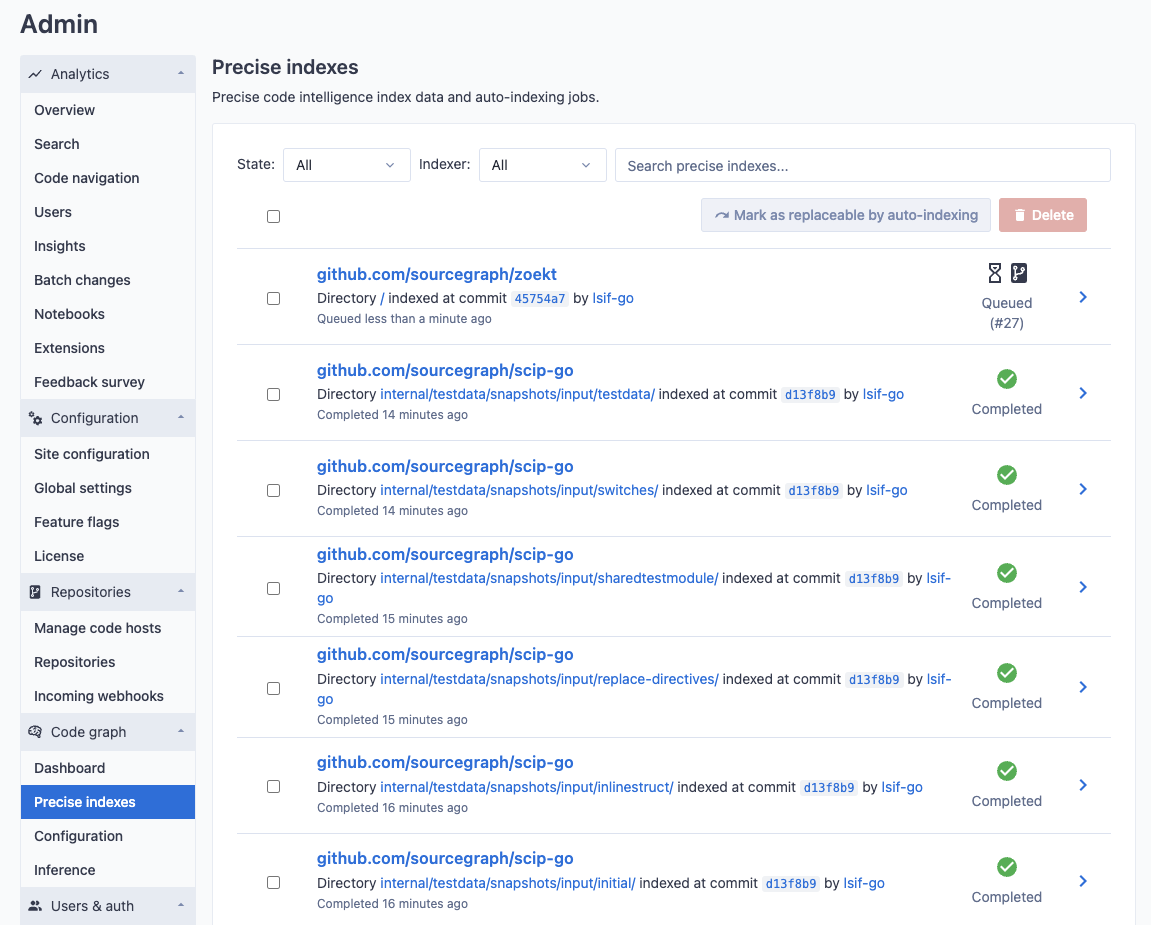Code Graph Data uploads
How Code Graph indexers analyze code and generate and index file.
Code graph indexers analyze source code and generate an index file, which is subsequently uploaded to a Sourcegraph instance using Sourcegraph CLI for processing. Once processed, this data becomes available for precise code navigation queries.
Lifecycle of an upload
Uploaded index files are processed asynchronously from a queue. Each upload has an attached state that can change as work associated with that data is performed. The following diagram shows the possible transition paths from one state of an upload to another.
The typical sequence for a successful upload is: UPLOADING_INDEX, QUEUED_FOR_PROCESSING, PROCESSING, and COMPLETED.
In some cases, the processing of an index file may fail due to issues such as malformed input or transient network errors. When this happens, an upload enters the PROCESSING_ERRORED state. Such error uploads may undergo multiple retry attempts before moving into a permanent error state.
At any point, an uploaded record may be deleted. This can happen due to various reasons, such as being replaced by a newer upload, due to the age of the upload record, or by explicit deletion initiated by the user. When deleting a record that could be used for code navigation queries, it transitions first into the DELETING state. This temporary state allows Sourcegraph to manage the set of Code Graph uploads smoothly.
Changing the state of an upload to or from COMPLETED requires updating the repository commit graph. This process can be computationally expensive for the worker service or Postgres database.
Lifecycle of an upload (via UI)
After successfully uploading an index file, the Sourcegraph CLI will provide a URL on the target instance to track the progress of that upload.

You can view the data uploads for a specific repository by navigating to the Code Graph page on the target repository's index page.

Alternatively, website administrators of a Sourcegraph instance can access a global view of Code Graph data uploads across all repositories from the Site Admin page.

Repository commit graph
Sourcegraph maintains a mapping from a commit of a repository to the set of upload records that can resolve a query for that commit. When an upload record transitions to or from the COMPLETED state, the set of eligible uploads changes, and this mapping must be recalculated.
Upon a state change in an upload, we flag the repository as needing an update. Subsequently, the worker service updates the commit graph and asynchronously clears the flag for that repository.
When an upload changes state, the repository is flagged as requiring an update status. Then the worker service
will update the commit graph and unset the flag for that repository asynchronously.
While this flag is set, the repository's commit graph is considered stale. This means there may be some upload records in a COMPLETED state that aren't yet used to resolve code navigation queries.
The state of a repository's commit graph can be seen in the code graph data page on the target repository's index page.

Once the commit graph has updated (and no subsequent changes to that repository's uploads have occurred), the repository commit graph is no longer considered stale.
